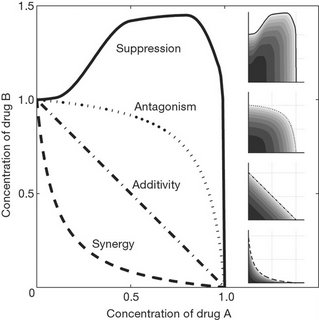|
Monday, April 09, 2007
 I've worried before about the evolution of antibiotic resistance and its potential impact on human health. In that post, I noted that I've worried before about the evolution of antibiotic resistance and its potential impact on human health. In that post, I noted that The one thing we have going for us is that we understand the basics of evolution-- that is, we can predict how a population of bacteria will respond to the next antibiotic, and we have an idea of the population dynamics at work as resistance spreads. I have the feeling that somehow this information could be used to defuse the "arms race", but I'm not sure how... It turns out other people have better imaginations than I; check out this paper, Antibiotic interactions that select against resistance. From the abstract: Normally, the presence of a drug confers an advantage on its resistant mutants in competition with the sensitive wild-type population1. Here we show, by using a direct competition assay between doxycycline-resistant and doxycycline-sensitive Escherichia coli, that this differential selection can be inverted in a hyper-antagonistic class of drug combinations. Used in such a combination, a drug can render the combined treatment selective against the drug's own resistance allele...Our findings demonstrate a previously unappreciated feature of the fitness landscape for the evolution of resistance and point to a trade-off between the effect of drug interactions on absolute potency and the relative competitive selection that they impose on emerging resistant populations. The idea is simple: imagine a combination of antibiotics in which the combined effect is weaker than that of one of the drugs alone (the curve labeled "suppression" in the figure). You might normally want to avoid this situation. But if the combined effect is weaker than the effect of a single drug alone, a resistant bacteria might only see the effect of one of the drugs, which, in this case, is stronger than the combination. Thus, selection against resistance. It's quite clever. Of course, it's far from being implemented-- in their toy situation, only resistance against one of the drugs is being selected against, so resistance against the other drug is a possibility. A detailed analysis of the paramter space for multi-drug combinations, plue empirical measurements of multiple drug interactions, would go a long way. Also, these experiments were done with sublethal concentrations of the drugs in a pretty contrived situation. Nonetheless, this is really cool. Could "applied population genetics" become a real field? |



